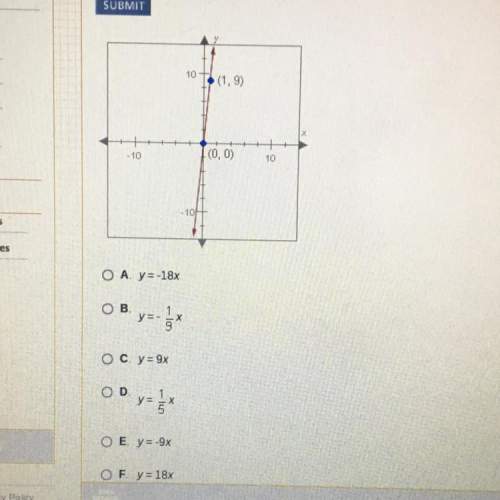
Mathematics, 10.02.2020 23:50 habsofarah0
To derive Euler’s method, we truncated the Taylor series expansion of yi+1 at the linear term. We could truncate at the quadratic term instead, giving the so-called Taylor method of order 2. This method approximates yi+1 byωi+1= ωi+ hf(ti,ωi) + h^2/2. df/dt| (ti,ωi)a. For the IVP y'(t)= y^2. e^-t, 0 ≤ t ≤ 1, y(0)= 1, Calculate df/dt. b. By hand, use both Euler's method and the Taylor method of order 2 to approximate y(1) with h=0.5

Answers: 1


Another question on Mathematics

Mathematics, 21.06.2019 18:00
Sara can take no more than 22 pounds of luggage on a trip.her suitcase weighs 112 ounces.how many more pounds can she pack without going over the limit?
Answers: 1

Mathematics, 21.06.2019 18:30
The lengths of two sides of a right triangle are given. find the length of the third side. round to the nearest tenth if necessary. a) y = 12/5x + 39/5 b) y = 5/12x + 5/39 c) y = 12/5x - 39/5 d) y = 5/12x - 5/39
Answers: 2

Mathematics, 21.06.2019 19:00
The reflexive property of congruence lets you say that ∠pqr ≅
Answers: 1

Mathematics, 22.06.2019 02:10
Martha is training for a duathlon, which includes biking and running. she knows that yesterday she covered a total distance of over 55.5 miles in more than than 4.5 hours of training. martha runs at a speed of 6 mph and bikes at a rate of 15.5 mph.
Answers: 1
You know the right answer?
To derive Euler’s method, we truncated the Taylor series expansion of yi+1 at the linear term. We co...
Questions





Chemistry, 08.05.2021 01:00

Mathematics, 08.05.2021 01:00





Mathematics, 08.05.2021 01:00



Mathematics, 08.05.2021 01:00

Mathematics, 08.05.2021 01:00




Mathematics, 08.05.2021 01:00

Mathematics, 08.05.2021 01:00





